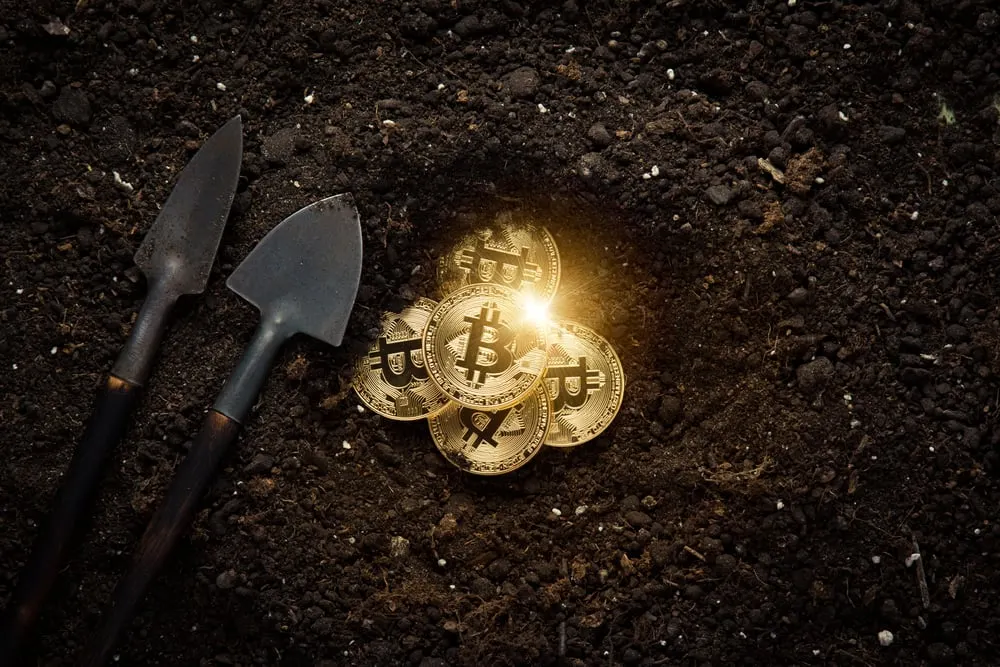In brief
- Square has released a white paper on Bitcoin's environmental impact.
- In the white paper, Square suggests that Bitcoin is the road to a green future. But not everybody agrees.
Today is Earth Day and the debate is raging about Bitcoin’s impact on the environment.
In the latest salvo, fintech giant Square along has published a white paper outlining ways that Bitcoin can pave the way for a greener future.
The white paper, which includes data supplied by ARK Investment Management, was released as part of Square’s Bitcoin Clean Energy Initiative, an effort to support companies working to integrate forms of environmentally sustainable Bitcoin mining. In it, Square claims that Bitcoin mining and renewable energy is “well suited” to accelerating an energy transition.
Square’s white paper
The white paper makes one central claim: that Bitcoin mining is an opportunity for a global transition to renewable energy. (Note that Square has put 5% of its cash in Bitcoin while ARK is a big investor in Coinbase, so both companies have a stake in Bitcoin's reputation).
Notably, Square suggests that clean energy sources—like solar and wind power—are hitting a bottleneck because of unreliable power supplies and grid congestion. The company also asserts that Bitcoin miners can act as a “flexible load option” enabling power grids to deploy “substantially” more renewable energy.
Bitcoin mining, Square claims, is an “ideal complementary technology for renewables and storage.” And by combining Bitcoin miners with renewables plus storage projects, Square asserts that renewable energy like solar and wind becomes more profitable.
In turn, this could improve the returns for solar and wind projects, act as a catalyst for new wind and solar projects, and provide renewable grids with readily available “excess” energy. In short, Square claims that Bitcoin mining is a vital ingredient if we want to push renewable energy industries forward.
But despite Square’s optimistic outlook for the Bitcoin network’s future, its rosy projections rely on some questionable assumptions.
Square’s Bitcoin assumptions
Square’s white paper relies on several assumptions, and not all of them are justified.
For one, Square describes Bitcoin miners as “location agnostic,” and only requiring an Internet connection to function. Based on the relevant geographical data about Bitcoin mining operations, this statement is open to question.
In this 2019 study published in science journal Joule, an analysis of IP addresses showed that over two-thirds of the Bitcoin network’s computing power (68%) is based in Asia. Only 17% and 15% of the network’s computing power was found in Europe and North America respectively.
Today, Cambridge University’s Bitcoin Mining Map finds that China commands 65% of the world’s Bitcoin mining industry. These figures point to a clear preference among miners for setting up operations in Asia.

The Square white paper also alleges that the Levelized Cost of Energy (LCOE) by energy source shows that hydro, wind, and solar are all cheaper than fossil fuel energy sources like coal. That may be true, but it still doesn’t mean that Bitcoin miners have flocked—or will flock—to renewable energy to power their operations.
Cambridge University study found that, for now, 39% of the Bitcoin network’s power comes from renewable energy sources. Meanwhile, some of it is powered by some of the dirtiest energy there is. Case in point: just last weekend, a coal mine in China’s Xinjiang region flooded and shut down. This resulted in Bitcoin's hash rate suddenly following to its lowest point since November 2020—showing that Bitcoin is still heavily reliant on non-renewable energy.
One of the reasons for this may be, as Quantum Economics’ Bitcoin analyst Jason Deane previously told Decrypt, is that “China’s current obsession with coal plants—despite greenhouse emission promises—means that certain miners can take advantage of cheap “dirty” power in some regions.”
Square’s report also suggests that Bitcoin mining could encourage investment in solar power or other forms of renewable energy. Of course, this may turn out to be true, but Bitcoin miners are incentivized by what is best for their businesses.
Square rightfully points out that renewables—by levelized cost of energy—are cheaper than coal. However, as Geoff Morphy, president of North American Bitcoin mining company Bitfarms, recently told Decrypt, “As we expand, can we stay with pure hydroelectricity? We don’t know. If we do switch to some type of carbon because the world has an opportunity where there’s surplus somewhere, and we can take advantage of that surplus, then we will.”
Doubting Square's green energy optimism
Not everybody agrees with Square’s lofty expectations for a green Bitcoin future.
Citi, who just last month suggested that Bitcoin may one day be the currency of choice for international trade, has since qualified its projection to say Bitcoin’s energy consumption is “a problem in a world that is increasingly aware of the impact of investment decisions on the environment.”
The bank’s report also suggested—like Square—that the use of renewable energy might be the solution for Bitcoin down the line. Citi pointed to the fact that almost 40% of all Bitcoin mining is based on renewable energy today, and added that the “decentralized nature” of Bitcoin may allow miners to optimize their energy consumption in the future.
With that being said, the data suggests Bitcoin’s energy consumption (and resulting carbon footprint) is going in the wrong direction. Today, Cambridge University suggests Bitcoin consumes approximately 113 TWh of energy per year, while Digiconomist, a website dedicated to unearthing the unintended consequences of technology, puts the figure closer to 100 TWh.
This time last year, Cambridge University and Digiconomist put Bitcoin’s energy consumption at 74 TWh and 75 TWh respectively.

